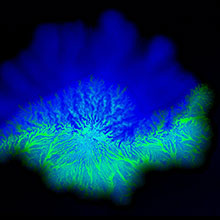Department Environmental Microbiology
Project MicroscapesX
Individual microbial cells rarely exist alone in the natural environment. Instead, they typically arrange themselves in space relative to other cells. Spatial positioning determines how different cells interact with each other (e.g., positive or negative effects on each other) and how those interactions lead to emergent community behaviors. The main objective of Microscapes is to understand the underlying processes that give rise to spatial self-organization and to predict the consequences of spatial self-organization on ecological processes.
To address our objective, we use synthetic microbial ecosystems where we impose specific types of interactions between different cell types. We then manipulate those interactions and measure the consequences on spatial self-organization and emergent community behaviors. We finally develop quantitative and predictive models for the formation and dynamical behavior of spatially assembled communities.
Microscapes is an inherently interdisciplinary project that encompasses a wide range of biological disciplines, including microbiology, ecology, evolution, and systems biology. We always strive to integrate experiments with mathematical modeling. The broader project therefore encompasses a total of five research groups that meet on a regular basis and have different expertise. Three groups focus on experimentation (Jan Roelof van der Meer, UNIL; Yok Que Ai, CHU; David R. Johnson, Eawag) while the other two focus on mathematical modeling (Dani Or, ETHZ; Vassily Hatzimanikatis, EPFL).

